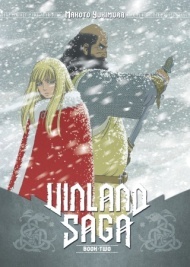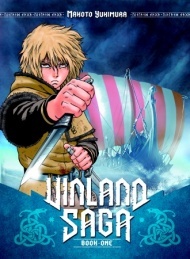Creator: Makoto Yukimura U.S. publisher: Kodansha ISBN: 9781612624211 Released: January 2014 Original release: 2006-2007 Awards: Japan Media Arts Award, Kodansha Manga Award The second Vinland …
What’s Michael?, Book Two
Creator: Makoto Kobayashi U.S. publisher: Studio Proteus ISBN: 9781560600787 Released: February 1991 Original release: 1985 Awards: Kodansha Manga Award Before there was Konami Kanata's Chi's …
Vinland Saga, Omnibus 1
Creator: Makoto Yukimura U.S. publisher: Kodansha ISBN: 9781612624204 Released: October 2013 Original release: 2005 Awards: Japan Media Arts Award, Kodansha Manga Award Makoto Yukimura's …
Vagabond, Omnibus 3
Creator: Takehiko Inoue U.S. publisher: Viz Media ISBN: 9781421522456 Released: April 2009 Original release: 2000-2001 Awards: Japan Media Arts Award, Kodansha Manga Award, Tezuka Osamu Cultural …
Message to Adolf, Part 2
Creator: Osamu Tezuka U.S. publisher: Vertical ISBN: 9781935654445 Released: December 2012 Original run: 1983-1985 Awards: Kodansha Manga Award Osamu Tezuka's manga series Adorufu ni Tsugu …
Sugar Sugar Rune, Volume 1
Creator: Moyoco Anno U.S. publisher: Del Rey ISBN: 9780345486295 Released: September 2005 Original release: 2004 Awards: Kodansha Manga Award Sugar Sugar Rune was the third manga series by …


